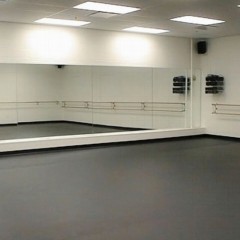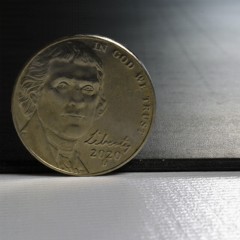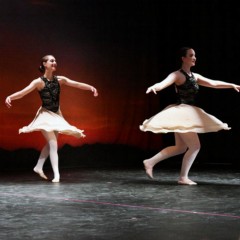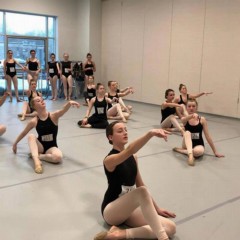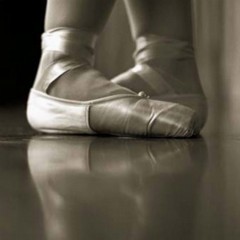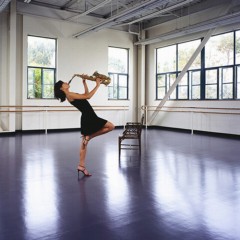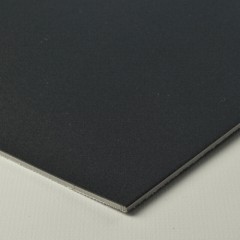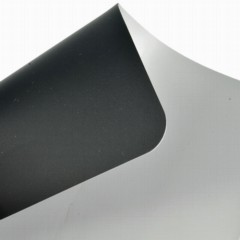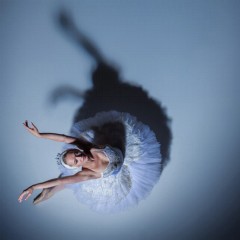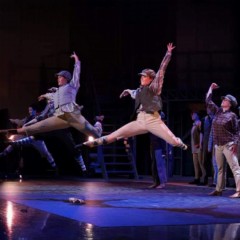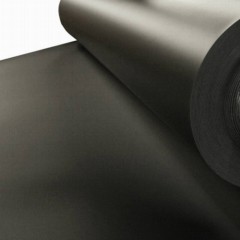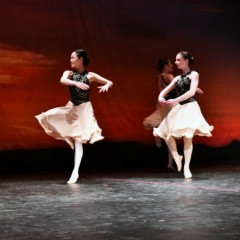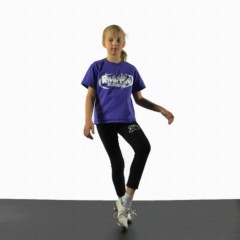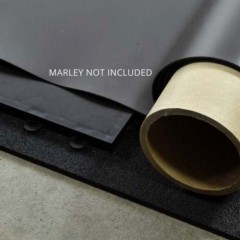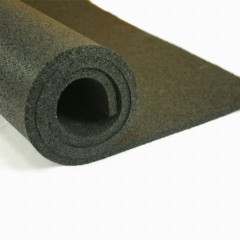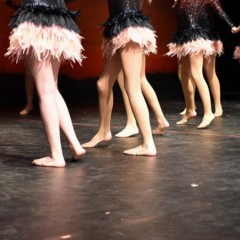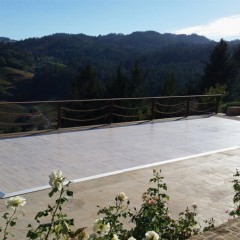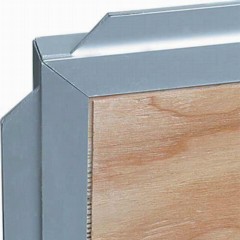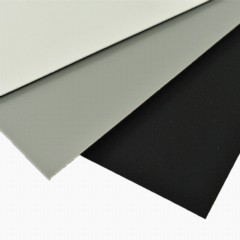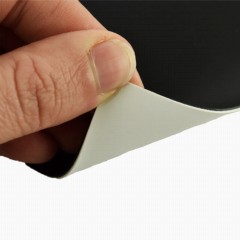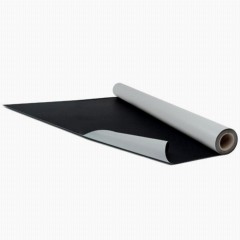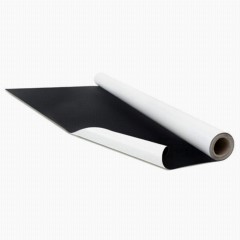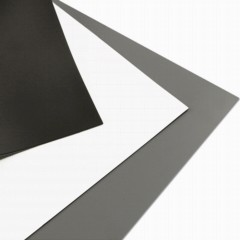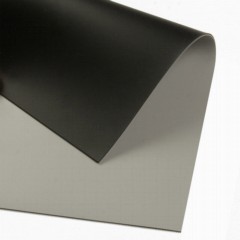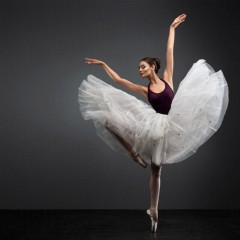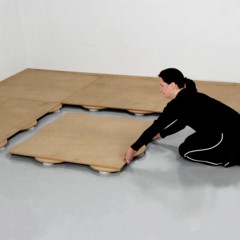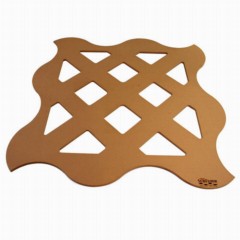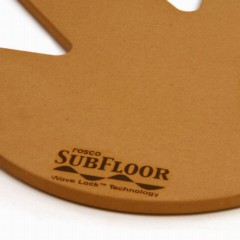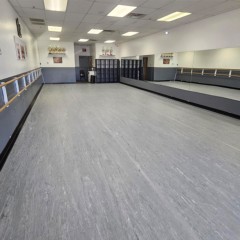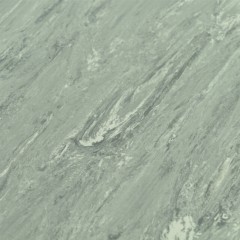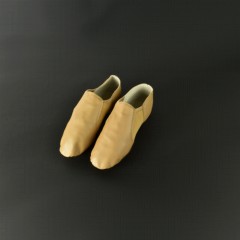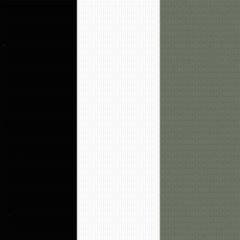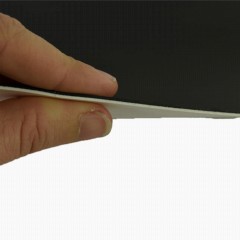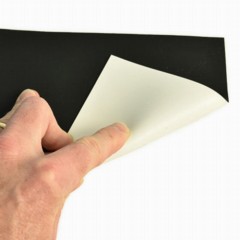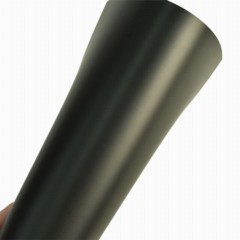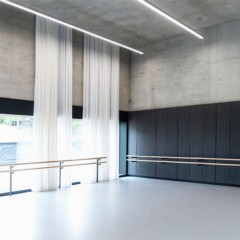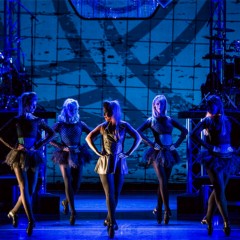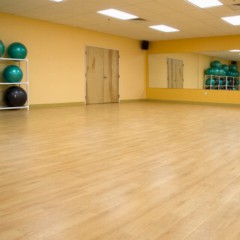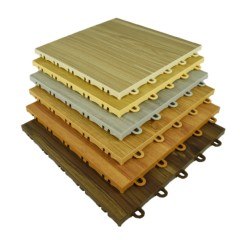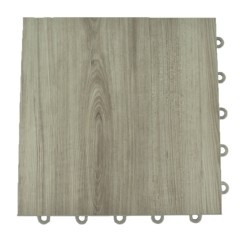Options for Dance Studio Flooring
Selecting dance studio flooring doesn’t have to be a stressful experience when you rely on Greatmats. Our dance room flooring experts have several different options that help you build the entire vinyl dance flooring structure, starting with the subfloor (if necessary).
Our products stand up to tough conditions, making them ideal as a permanent or portable commercial dance floor. When you want to dance like nobody’s watching – or if everyone in the studio audience is watching – our dance studio floors let you focus on your moves with no worries about the quality of your footing.
Types of Dance Studio Floor
At Greatmats, we offer several different types of dance studio commercial flooring options.
Rolls
We offer large rolls designed to cover a dance class floor in a single room for a reasonable price. Our portable rolls can cover an entire stage for a professional dance performance, too. The rolls are thin and made of vinyl to reduce the weight of the rolls.
Tiles
Tiles provide an easy-to-install option for creating a firm subfloor. We also offer tiles made to deliver a sprung floor, ensuring the highest level of safety and support for dancers. Some tiles work to create portable dance floors for events like weddings.
Underlayment Kits
Underlayment kits often contain a high-quality dance room floor layer, a cushioned layer, and a firm subfloor layer. The kits are made for easy DIY installations in a home, studio, or school.
Subfloors
Subfloors for dancing can consist of vinyl tiles, cushioned rubber or foam, or materials to create a sprung floor.
Benefits of Dance Studio Flooring
Some of the key benefits of our dance studio flooring options include:
- Beautiful finishes
- Sturdy materials
- Portable or permanent layouts
- Easy DIY assembly
- Suitable for practice or performance
- Thin material reduces the weight of large rolls
- Commercial-quality designs
- Options to create a home dance studio
- Sizes to cover a studio classroom or room at home
- Easy to clean and maintain
- Non-skid surfaces
- Different colors available with some reversible designs
Use Types and Dance Styles for Dance Studio Floors
When selecting our dance studio floor products, you can match the style of dance to the flooring product, including:
- Portable Flooring Rolls: For dance and stage performances at various locations, portable floors are the best selection.
- Portable Flooring Tiles: Many vinyl tiles have a wood-grain look that works nicely for many kinds of dance, including tap, ballroom, and events with dancing like weddings. They’re great for a DIY installation.
- Marley Floors: Marley rolls are highly versatile, making them suitable for ballet, tap, Irish, flamenco, modern, folk, and other general dance styles.
- Cushioned Dance Floor Roll: These rolls use PVC plastic and a foam backing layer that remains durable and thin while offering cushioning. It works for ballet, jazz, modern, hip hop, Irish, and other types of dance.
- No-Glare Floors: A no-glare marley roll is ideal for theater performances that involve dancing.
- Dance Studio Flooring Kits: Kits contain subflooring and the dance floor top layer, and they’re suitable for any kind of dance, including ballet, tap, hip hop, modern, folk, and more.
- Sprung Dance Floor Panels: Sprung panels absorb the impact when a dancer lands, while working nicely for dance styles like ballet, folk, modern, Irish, and flamenco.
Dance Studio Flooring Q&A
Why is marley the best flooring for a dance studio?
Marley is the
best flooring for a dance studio because it is cost-effective, slip-resistant, versatile for several styles of dance, and durable. It also looks great, making it suitable for performances and studio rehearsal sessions with parents looking on, ensuring your studio delivers a professional appearance.
What thickness should you plan for a dance floor?
The
most common thickness when creating a dance floor is up to 2 inches, but the actual thickness depends on the level of cushioning you want to use. Some places that use marley alone would have a fraction of an inch of thickness.
Do I want portable or permanent dance studio flooring?
Choosing between
portable and permanent dance studio flooring depends on whether you always practice and perform in the same location, like a studio, or whether you need to carry the floor with you to remote performances.
How do you clean dance studio flooring?
To
clean dance studio flooring, you should sweep dust and debris daily. These contaminants can cause damage over the long run. Each week (or after heavy usage), use a cleaning product on the flooring to disinfect the material and remove oils left over from the dancers’ skin.
What types of flooring are used in a dance studio?
The different
types of flooring you can use in a dance studio include interlocking subfloors, full rolls of marley, and wedge mats. The right flooring depends on the level of cushioning you want and the look you need for the final layout.
 $1975 /Linear Ft You Save 16%$3.76/sqftShips Out in 1-3 Working DaysShop$52128 /Each You Save 10%$57.92/sqftShop$3445 /Linear Ft You Save 4%$5.30/sqftShips Out in 4-6 Working DaysShop$3,70538 /Roll You Save 5%$4.34/sqftShips Out in 4-6 Working DaysShop$2700 /Linear Ft You Save 4%$5.14/sqftShips Out in 1-3 Working DaysShop$2,92334 /Roll You Save 4%$4.24/sqftShips Out in 1-3 Working DaysShop$21018 /Each You Save 4%$17.16/sqftShop$10474 /Tile You Save 4%$8.55/sqftShop$1,20464 /Roll You Save 15%$2.80/sqftShips Out in 7-10 Working Days SustainableShop$3,13484 /Roll You Save 9%$5.87/sqftShips Out in 1-3 Working DaysShop$3,16008 /Roll You Save 9%$5.94/sqftShips Out in 1-3 Working DaysShop$2,93436 /Roll You Save 10%$6.90/sqftShips Out in 1-3 Working DaysShop$2,14553 /Roll You Save 9%$3.12/sqftShips Out in 1-3 Working DaysShop$2,08160 /Roll You Save 10%$4.84/sqftShips Out in 1-3 Working DaysShop$2,56647 /Roll You Save 15%$7.79/sqftShips Out in 4-6 Working Days SustainableShop$695 /Tile You Save 30%$6.95/sqftShips Out in 1-3 Working DaysShop
$1975 /Linear Ft You Save 16%$3.76/sqftShips Out in 1-3 Working DaysShop$52128 /Each You Save 10%$57.92/sqftShop$3445 /Linear Ft You Save 4%$5.30/sqftShips Out in 4-6 Working DaysShop$3,70538 /Roll You Save 5%$4.34/sqftShips Out in 4-6 Working DaysShop$2700 /Linear Ft You Save 4%$5.14/sqftShips Out in 1-3 Working DaysShop$2,92334 /Roll You Save 4%$4.24/sqftShips Out in 1-3 Working DaysShop$21018 /Each You Save 4%$17.16/sqftShop$10474 /Tile You Save 4%$8.55/sqftShop$1,20464 /Roll You Save 15%$2.80/sqftShips Out in 7-10 Working Days SustainableShop$3,13484 /Roll You Save 9%$5.87/sqftShips Out in 1-3 Working DaysShop$3,16008 /Roll You Save 9%$5.94/sqftShips Out in 1-3 Working DaysShop$2,93436 /Roll You Save 10%$6.90/sqftShips Out in 1-3 Working DaysShop$2,14553 /Roll You Save 9%$3.12/sqftShips Out in 1-3 Working DaysShop$2,08160 /Roll You Save 10%$4.84/sqftShips Out in 1-3 Working DaysShop$2,56647 /Roll You Save 15%$7.79/sqftShips Out in 4-6 Working Days SustainableShop$695 /Tile You Save 30%$6.95/sqftShips Out in 1-3 Working DaysShop



